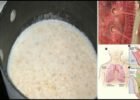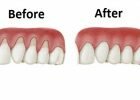Nowadays, a great portion of the food we regularly consume is full of sugar, and they are hidden in most processed foods.
However, all doctors and experts suggest that you should consume sugar in moderate amounts only, as it has a detrimental effect on the health.
Therefore, fitness trainer and nutritionist, JJ Virgin wrote a book whose goal is to inform you about all foods that hide sugar in the content. Moreover, she also gives additional tips on how to improve your health, by weaning from it.
Her book, The Sugar Impact Diet: Drop 7 Sugars to Lose Up to 10 Pounds in Just 2 Weeks, speaks about the confusion regarding sugar. Namely, numerous people who take care of their health believe that the consumption of all-natural sugar cannot be harmful, but they are mistaken, as raw cane sugar, natural fruit sugar, as well as agave, actually destroy the health.
“Sugar is really public enemy number one. That’s why I chose to focus on it. I don’t think added sugar is really the problem; I think it’s what’s in a lot of our food that we don’t recognize [as sugar].
Whether it’s having apple juice (which is worse for you than a soda), or having a yogurt sweetened with fruit juice concentrate, or whether you’re just thinking that fruits are free for all, these are all creating problems.
I wanted to create a structured program that could help someone break free of those sugar cravings, drop the weight forever, and then let them go back and [do a food] challenge… in order to connect the dots between what happens when they drink one of those big fruit smoothies that are supposed to be so healthy.”
The author claims that sugar is the same to the body, regardless if it is consumed via fruit, cake, or a smoothie. She says: “Food is information.”
Thus, as soon as a person fights the need for constant sugar intake, he will instantly experience increased energy levels and a clarified mind. Yet, in order to do so, one must retrain the body system to burn fat as a primary fuel form, instead of sugar.
The book by JJ also reveals the gradual process of burning sugar to burning fat as a primary fuel, in order to optimize the effects. She explains:
“There’s got to be a transition period, where you go from sugar burner to getting your body to be able to start to burn fat again. You have to taper down from where your starting point is, which is what I call a Sneaky Sugar Inventory, of things you would never think about (like sundried tomatoes and marinara sauce) that we’re just using like crazy not realizing how much sugar this is actually adding into our food.”
In order to start this process, it would be useful to measure the waist-to-hip ratio, as well as your body weight, in order to know the starting point, and use it to estimate the results over time.
The, you should make a research in order to spot all the hidden sugars in the food you consume. This includes reading the labels on the foods, even if you do not expect them to contain sugar, for instance, sauces, marinades, condiments, pickles, and the like.
The author lists numerous foods which include hidden sugar, and she has even invented a Sugar Impact Scales, which opens a completely new perspective in the way we look at sugar.
JJ explains as follows:
“It looks at fructose grams, glycemic load, nutrient density, and fiber. Bad are fructose and glycemic load; good are nutrient density and fiber. Depending on where the food falls, it can either be of low, medium, or high-sugar impact.
The reason this was so important to me is I keep looking at programs out there, and they either focus on fructose… glycemic index, or glycemic load.
That can be very confusing because it makes things like agave sweetener look great. It makes milk look great… People go, ‘We should have fructose because fructose is low on the glycemic index.’
The difference between fructose and glucose is fructose doesn’t trigger the whole insulin response. Because of that, it doesn’t trigger insulin, leptin, or ghrelin, so it doesn’t tell your body you ate anything. Instead, it just goes to the liver. If there’s no room for it to become glycogen… it starts becoming fat.
You look at that and you go, ‘Okay, food is information. What does fructose say?’ It says, ‘Hey, make fat but don’t tell us we ate. Stay hungry.’ What a nightmare!”
The high amounts of sugar in the diet lead to various symptoms, and the most common include: bloating, gas, since bad bacteria, fungi, and yeast feed on sugar, as well as sugar cravings, fatigue, headaches, weight loss resistance, joint pain, and inability to lose weight.
If you suffer from these symptoms, and if you track the body weight, hip, and waist, you will surely see the effect of sugar on the body. If you retrain the body to burn fat instead of sugar, you will definitely improve your health, treat these symptoms, and shape up your body.
Warning signs you’re eating too much sugar:
- Tiredness & Lack of energy
- Anxiety or depression
- Frequent colds & flu
- Skin problems (including dark circles under your eyes)
- Weight problems
- Dental issues
- Diabetes
- Heart problems and High blood pressure
- Sugar/Carb Cravings
Three Cycles of the Sugar- Impact Diet
The sugar-impact diet is divided in three cycles. The first cycle lasts for 2 weeks, in which you should replace high sugar impact foods with medium sugar impact foods.
For instance, if you usually eat pasta, you will need to start eating quinoa pasta. Moreover, she advises that you make a schedule of the meals, and increase the time between your meals, in order to avoid insulin spikes.
After 2 weeks of this taper-down period, you should estimate your results by doing a sugar impact quiz. If you have followed the diet right, your symptoms should have been reduced.
In this case, you can go to the next cycle, in which you will reset your ability to taste the real sweetness of food.
“What I’m doing is I’m getting rid of all of the fructose. We’re getting down to five grams or less [per day], just as low as possible because you don’t want your body to be good at processing fructose.
One thing we know is that the more fructose you eat, the better you get at handling fructose, which means the faster it goes to your liver, the faster you start making fat, and the more fat you make.
If someone’s used to eating fruit, they eat more fruit, they eat more fruit, and they can handle it. If you never eat any fruit, and you ate a bunch of fruit, you’d be bloated, you’d be gassy, and it’d be horrible.
I take fruit out altogether except for things like lemons, limes, avocado, tomato, and olives. And we go down to all low-sugar impact foods. But you’re still eating great stuff. You’re eating wild salmon, grass-fed beef, kale, avocado, nuts and seeds, a little quinoa, legumes, and lentils.”
In the second cycle of the program, most of the people are able to shift from burning sugar to burning fat as primary fuel. Yet, in the case of leptin resistance, or insulin resistance, this shift will require more time.
“The reason it can happen so fast is number one, you’ve got to do that initial one-week [taper] period,” she explains. “Whenever you look at a program, you want to jump right into the most intense part, but you can’t because you’ll fail.”
The third cycle of the program includes another challenge. You will begin to reintroduce some medium and high sugar impact foods. At this point, some people will be overwhelmed by the sweetness, or even bloated and ill by the food rich in sugar.
Consequently, the psychological grip of sweet foods will be reduced, and you will not want to get back to feeling ill when you have experienced a better condition.
The sweet cravings can be also reduced by consuming sour foods. Namely, fermented vegetables also support gut health, so it would provide doubled benefits. JJ claims:
“It’s a sweet tooth strategy. One of the things that I do in these books is I try to keep it simple and give people simple strategies. But I’m always thinking, “How am I healing their gut with this? How am I improving their gut flora? How are we reducing inflammation?”
On the other hand, there are also healthy snack alternatives, which can satisfy your need for sweet. Nuts are one of the best options, especially macadamia nuts, or pecans, due to 2 criteria:
- They are protein-low, so you will not consume the entire daily dose of proteins in a few handfuls.
- They are extremely rich in fat, the good fat, oleic acid, similar to olive oil.
Yet, note that everything should be consumed in moderate amounts, however, and you need to take care of the food triggers, as you should not keep them at home if you cannot resist eating the entire jar, as despite the healthy fats, nuts are also high in calories.
“If you know something’s your trigger, don’t bring it into the house. It doesn’t matter if it’s healthy or unhealthy. But I think if you put them into little serving baggies, that’s a perfect way to go with it.
I also like that because most people aren’t home all day long, so I say, ‘Put one in your car. Put it in your purse. Put it in your office so that you have them scattered around if you ever get in trouble.’
On the other hand, dehydrated kale chips and roasted Brussels sprouts are another healthy snack alternative, and they are more difficult to overdo.
The Maintenance Phase
Nowadays, most people actually burn sugar as a primary fuel. If you want to check for yourself, you should note how frequently you feel hungry.
Namely, if you feel hungry in a few hours, you are burning sugar as well. As sugar is burned fast, you are often craving food, as the body needs fuel.
If you switch to fat as a primary fuel, you will not be hungry for 5-6 hours after the meal, since fat is a much slower-burning fuel. As soon as the body starts to burn fat instead of sugar, you will no longer experience sugar cravings.
You surely wonder how long a person needs to follow this regimen after a successful program. JJ provides explanation for the maintenance phase as well:
“The maintenance phase is different from the weight loss phase. It’s like dating and marriage. Totally different beasts, right? During the maintenance phase—for weight loss—it’s about setting new goals and doing different fitness activities. The biggest thing that I want someone to do is to connect the dots between what they’re eating and how they feel.
It’s to lose that sweet tooth that they had and reclaim their sugar sensitivity so they really say, ‘Oh, wow, that’s how sweet a blueberry really is. In the maintenance phase you’ve got to mix up your exercise; you’ve got to mix up your food…
Food is information. You want your food to tell your body to burn fat not sugar, keep steady energy, great focus, and reduce inflammation. It’s the same with exercise. Exercise can be therapeutic or destructive.
I do no endurance training at all. I do not believe in endurance training. I did so much endurance training [when I was younger, yet] I was always slightly overweight. I was never lean.”
According to JJ, you should rather choose high- intensity interval-type exercises over endurance training, as endurance training does not provide significant results when it comes to weight loss, while high- intensity exercise is not necessarily linked to the burning of calories, but it focuses on beneficial metabolic changes.
Namely, it leads to fat burning, and supports muscle growth and overall health.
These metabolic changes boost the human growth hormone (HGH), which is not the case with endurance training. She also advises exercise in a fasted state, since it restores, repairs, and rejuvenates the muscle tissues.
She suggests that you should experiment in order to find the solution that works for your body, regarding your weight loss and fitness preferences:
“I kind of play with both of them. Because if you eat a little bit before you work out, you can generally work out harder. If you’re doing resistance training, a lot of times you’re better off having a little bit [of food] before.
If you’re doing burst training, ideally here’s what you would do: on burst-training days, do it first thing in the morning. It doesn’t take long anyway.
It’s 15 minutes at the most. Ideally, do that a couple of mornings a week, two or three mornings a week. You do your resistance training two times a week, have a little bit of food before; have something really good afterwards, and you’re set.”
Additional tips:
In case you have been trying to lose weight and you still consume foods like processed fructose, gluten, or pasteurized dairy, the reason you are not losing weight is actually the insufficient calorie restriction.
Namely, you are still consuming wrong food, but in reduced amounts. If you regard food as information, you will learn how foods affect the body functions, and send signals regarding the manner the body stores fat.
This, the difference is made by the food you consume, and you will gain major benefits if you train the body to burn fat instead of sugar. To do this, you should reduce the intake of fructose-laden foods that instruct the body to eat more and store the consumed sugar as fat.
Namely, fructose does not stimulate leptin, insulin, or ghrelin to the same degree as glucose, so it does not inform the body about the high- calorie amount you have ingested.
This means that you can actually train the body to burn fat instead of sugar, and this will quit sugar cravings, and lead to magnificent health improvements.
Sources and References:
articles.mercola.com




